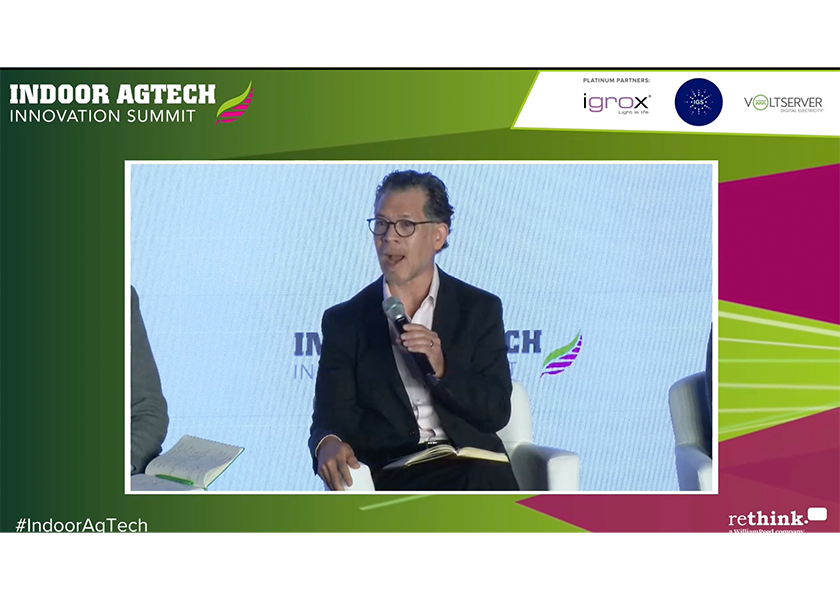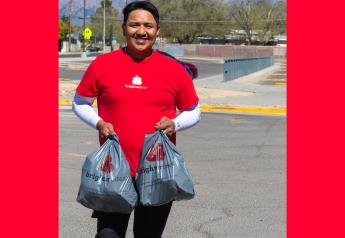Indoor AgTech Innovation Summit: How retailers, restaurants can sell CEA produce

NEW YORK — CEA, or controlled environment agriculture, is not a consumer term, so once a high-tech indoor grower gains retail-shelf real estate, that’s not the selling point to the end consumer.
“We all need to remember people are eating food, not technology. The freshness, taste, lasting longer — this is what’s going to get them in and on board,” said Yan Branco, head of quality control and sourcing director of Sobeys, which has 1,500 stores in Canada under several banners.
Branco was part of a panel of produce buyers and suppliers at the June 29 Indoor AgTech Innovation Summit session, “Communicating the Value of CEA to Consumers, Retailers and Restaurants.” The show was offered in person in Manhattan’s storied Times Square neighborhood and by live broadcast online.
Dorn Wenninger, senior vice president of produce at UNFI; Josh Waters, senior vice president of produce category management at US Foods; and Dave Vosburg, chief information officer of Local Bounti, joined Branco in the session moderated by Jessica Murphy, vice president of S2G Ventures.
“Customers are trying our product because it says ‘local.’ Because it’s priced lower this week. Because someone told them about it,” Vosburg said. “That drives that first try, and because of that first experience, it’s hard to go back [to their old leafy green choice] once they try it.”
Several panelists stressed that CEA growers need to differentiate their product offerings from what field growers have. Don’t just provide exact substitutes of, say, the outdoor-grown romaine that’s had food safety troubles the last several years, they say.
That’s the kind of solution that will sell both to the retailer and foodservice customer, and to the shoppers.
“Make varietals that are difficult to grow outdoors in the field. Offer something unique on the shelf that competitor doesn’t have,” Branco said.
Showing that differentiation through promotions is a step further.
Related: "Tip of the Iceberg Podcast" — UNFI, Square Roots executives on co-location
Also, sampling is back, said Wenninger of UNFI, a publicly traded grocery wholesaler. The company delivers fresh, branded and owned-brand products to more than 30,000 locations throughout North America, including natural product superstores, independent retailers, conventional supermarket chains, e-commerce providers and foodservice customers.
“Retailers are always looking for excitement. That’s a brilliant way to make sure your products are getting into the mouths of consumers, and as buyers, we’re looking for that. And that’s a way to get that excitement,” Wenninger said.

There isn’t yet a broad distribution network of suppliers in each region, and that’s a challenge for buyers, said Waters of US Foods, which supplies restaurants and health care facilities.
Another pain point is the financial strains on CEA companies and the cost of scaling up and out so that there’s a broader distribution network.
Related: 2022 Year In Produce: Controlled Environment Agriculture
The numbers looks good, in one way, Wenninger said.
"Packaged salads are down in units, yet CEA is up 38% in units, but of course that’s from a smaller base. It’s easy to get lost in macro-data,” Wenninger said. “As a buyer, that tells me, holy cow, this is absolutely going somewhere. How do I sort through the confusion? This is going to go up exponentially, but I agree with Paul [Sellew of Little Leaf Farms, in the prior session] that there will be winners and losers in the next three to five years. Our buyers are so busy that they don’t have the time to dig into this themselves.
“We know CEA is about to explode," he continued. "But we’d like to bet on the ones that are going to make it.”
Related: More CEA news







